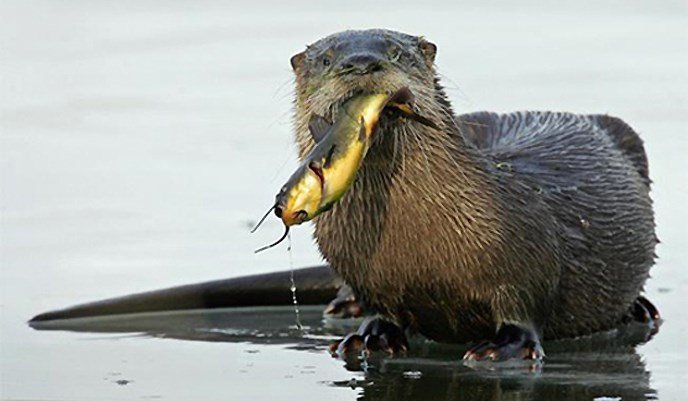North American River Otter (Lontra canadensis)
North American river otter with fish (photo credit: NPS)
Description: Although typically found in rivers, as their name suggests, the North American river otter is sometimes sighted in estuaries, beaches, and in the ocean. People often confuse river otters for sea otters, but a river otter can be identified by its long sleek body, small arms and legs, as well as its behavior. River otters are shaped like their weasel relatives and grow to about 1.2 m long, weighing between 5 to 14 kg. River otters are semi-aquatic, meaning that they spend a significant portion of their lives on land. Sea otters, on the other hand, are longer, more stout, and rarely go onto land. In Cannon Beach, North American river otters are most commonly seen in the Ecola Creek estuary or near Silver Point. If you see any kind of otter, give it space. Although they look cute, otters are wild animals and can act defensive if a person approaches.
Habitat: Living in a variety of aquatic environments, the North American river otter can be found across the US and Canada. They hunt in waterways like rivers, ponds, lakes, and the ocean, and sleep on land in dens.
Diet: North American river otters have a varied diet due to the diversity of environments they can live. They hunt for fish, aquatic invertebrates, frogs, turtles, bird eggs, small mammals, and aquatic vegetation.
Tide Pool Tidbits:
North American river otters can hold their breath for up to 8 minutes.
The life span of the North American river otter is typically around 10 years but they have been known to live as long as 21 years.
They are fast runners, reaching speeds of 24 km (15 mi) per hour.
Reference: National Wildlife Federation


